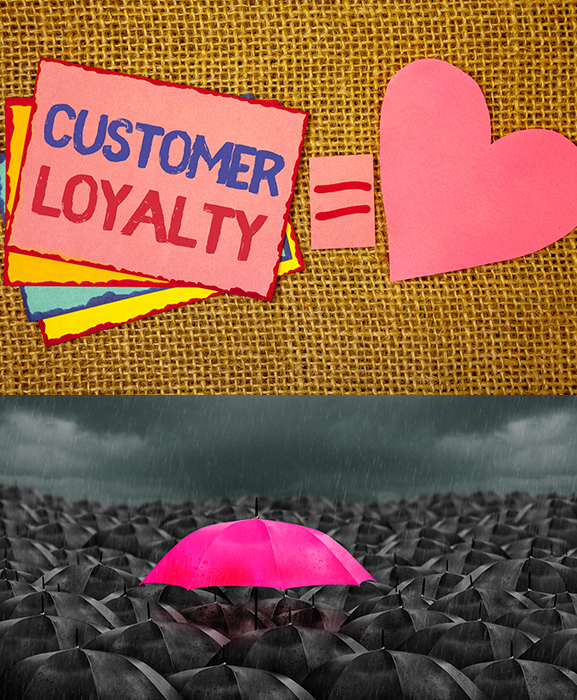How to create an effective customer journey leading to long-term business relationships
Do you want to improve the performance of your company? The solution could be found in your customers and how your company interacts with them. Relationship development is one of the tactics for enhancing client retention. They have the potential to transform your bottom line and business as a whole if you use them effectively. How? First, it's important to understand why your company should try to create long-term relationships with customers - and what changes you'll need to do to make that happen. If you've been in business for some time, you know how difficult it is to acquire a new customer.
Depending on your sector, you can spend a lot of money and time marketing to customers in the hopes of making even one sale. Even if a first-time client makes a purchase, there's no assurance that the individual will return to make repeat purchases. The section of your customer base that buys from you regularly could be your company's most valuable asset. You may experience significantly better profitability by altering your marketing expenditure so that you target not only new clients but also nurture your existing audience.

Here are seven techniques to ensure that your business has a large number of long-term customers.
- Involve them:
Customers that stay with a firm for a long time usually do more than just buy their products or services. They have a connection with the company, which encourages them to return. Make sure you're engaging clients and building their connections through your website, email messaging, and social media posts. Many software developing companies develop software that allows companies to tailor their interactions with customers. You may gather information and use it to make people feel like they have a one-on-one relationship with your business if you have the correct tools in place.
- Allow them to become acquainted with your brand
Nothing compares to the in-person experience of dealing with a corporation. Customers will sense a better connection with you and your team if they can meet you and your team in person while also viewing your products in person, rather than if they only purchased from your website and read your emails. Find ways to meet your customers face to face, and use experiential marketing strategies to advertise, invite, and follow up afterwards. This is so apt in the B2B domain.
Many websites help you to take advantage of these opportunities. They handle the full customer journey, from scheduling and registration to closing the loop and collecting feedback after the session. While allowing fans to interact with the brand, the platform (also known as an Experience Relationship Management platform) collects data on each registrant that may be used to establish long-term relationships.
- Recognize how they feel about your brand:
You need to know as much as possible about your customers to effectively serve them. Analytical tools can help you to see things graphically and in an open channel way. It also allows businesses to see which parts of their website are receiving the most traffic. You can take note of which features receive more hits than others and make sure you're focused on those elements of your website and build the sense of customer brand preferences.
- Examine their social media clout:
Not all clients are created equal when it comes to spreading the word about your business. Some will have a sizable online following, while others will have a social media presence that is largely inactive. Maintaining ties with your most engaged customers can pay off if they mention you on social media.
- Adding value:
Your goal is to get new clients interested in the things you offer. The purpose of a customer is to identify products and services that give value to their lives. Keep in mind what the average customer hopes to obtain out of a connection like this when you construct a strategy to increase client loyalty. You can establish connections that bring value to your customers' lives through your content and brand experiences, making them want to keep buying from you.
- Make them feel unique:
No customer wants to be treated as if he or she is a number. One advantage that tiny firms have over much larger enterprises is this. However, as your company grows, getting to know each individual might become increasingly challenging. Include the date of the customer's initial purchase in your database, as well as a notes section where you and your employees can record any minor facts that arise.
- Respond to all concerns:
Even the most devoted customer might run into issues. It's critical to provide the same polite, attentive service to everybody who calls for assistance, regardless of how many times they've purchased from you. However, if a long-term customer has a problem, it's critical to respond quickly to avoid losing a customer who buys frequently. Make sure you're keeping an eye out for brand mentions online, as well as customer concerns made on social media or review sites. This type of criticism can cause you to lose not only the customer who is complaining, but it can also scare off any potential new customers.
Businesses strive to attract new clients' repeat business. However, it's simple to lose customers without even recognising why they're not returning. Brands can discover more about the buyers they're attracting with the correct technologies, allowing them to develop stronger marketing tactics. These tools can also assist a company in ensuring that it continues to give excellent service to both new and long-term clients.

CONCLUSION
Great customer connections don't happen by accident, therefore it's critical to create and maintain them at every touch point. When a company succeeds at this, it can get more devoted customers, a better reputation, and more sales. A shift in thinking inside your company is required to make it more structurally receptive, open, and welcoming. To do this, focus more on inbound digital marketing methods. Another aspect of this shift is the adoption of CRM technology and its widespread implementation. Successful client connections require a little innovation, active listening, and appreciation. Now that you have a better grasp of how to keep customers and establish relationships, you can start using it to grow your business or consult an expert like ChalkWalk Consulting team to help you take it to the next level!



Leave a Reply